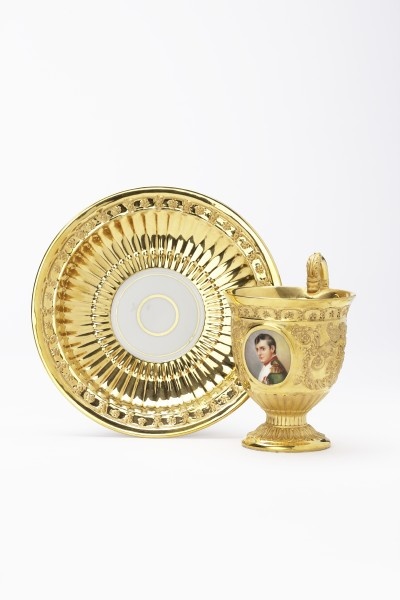Prunk- und Glanzvolles kennzeichnet den Empirestil. Auf vielen Porzellanobjekten dieser Zeit finden sich daher großflächige oder vollständige Vergoldungen.
Ein Beispiel für letztgenanntes ist diese Tasse, die mit reliefierten, geflügelten und Posaunen haltenden Putten sowie einem gemalten Medaillon des jungen Napoleon verziert ist. Dieser erinnert an ähnliche Darstellungen auf Gemälden von Jacques-Louis David (1748–1825), beispielsweise jene von Napoleon in seinem Arbeitszimmer.
Schenkung durch Kurt-Pingel-Stiftung, Leipzig, 1938.
en

